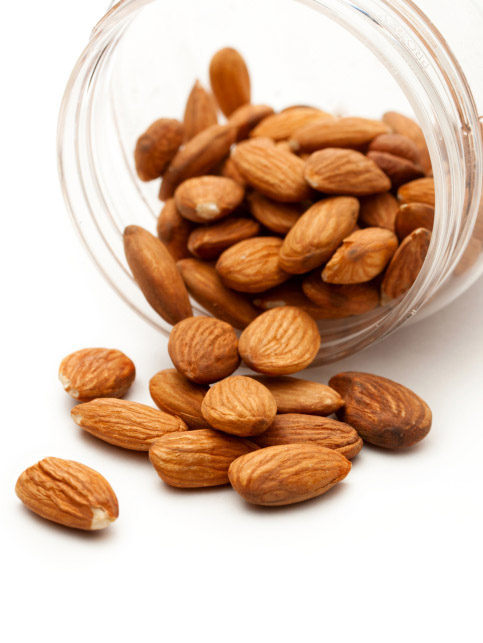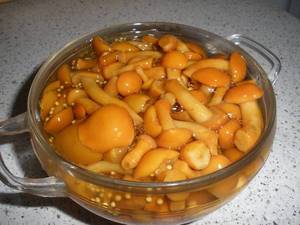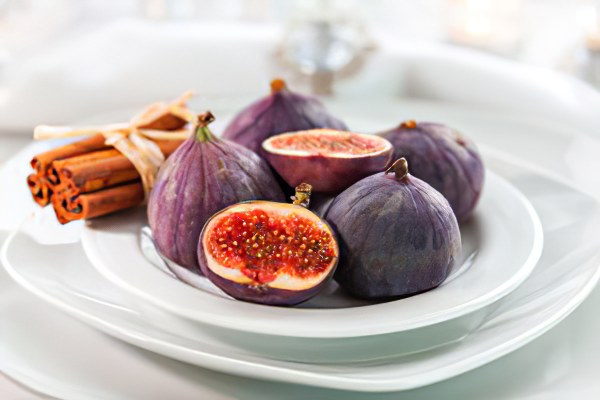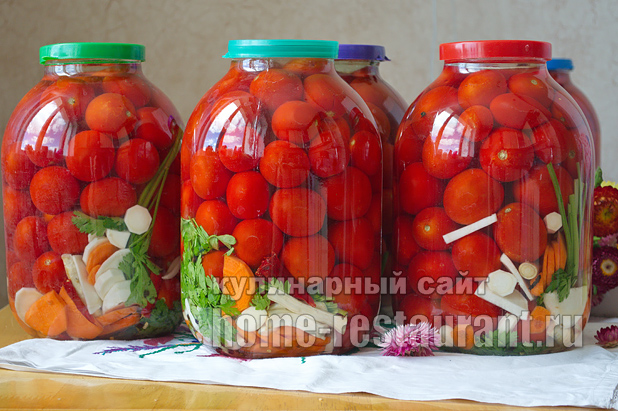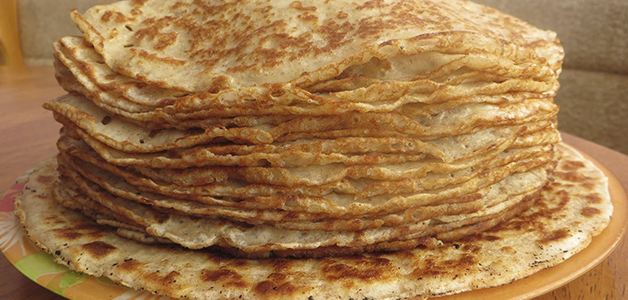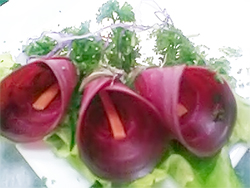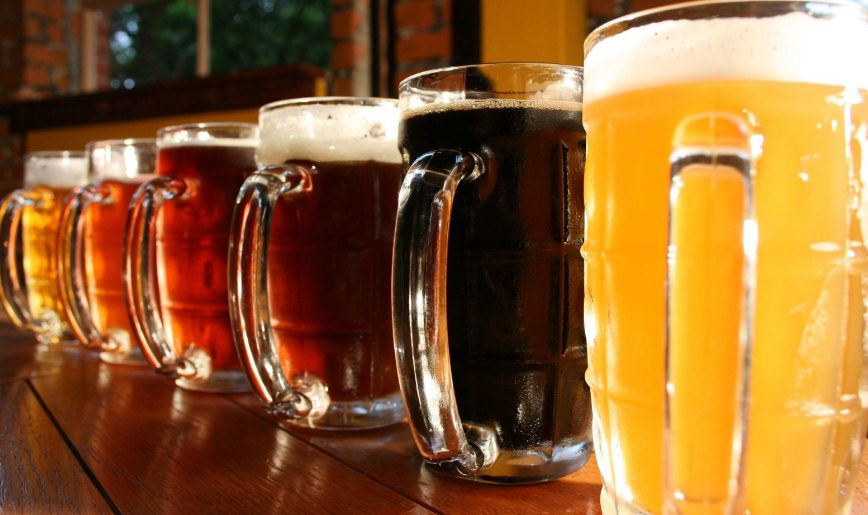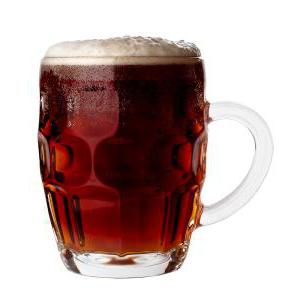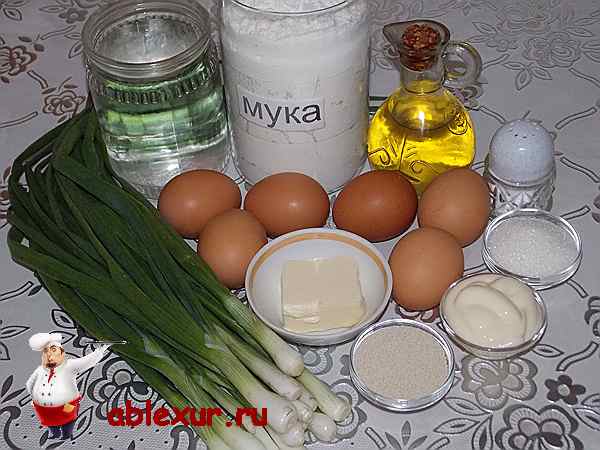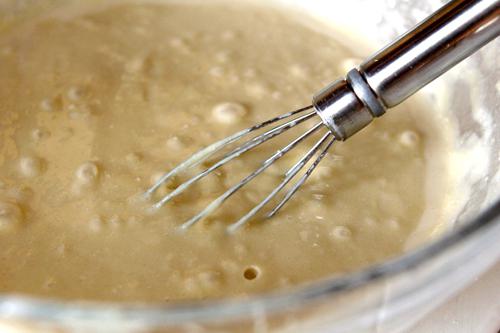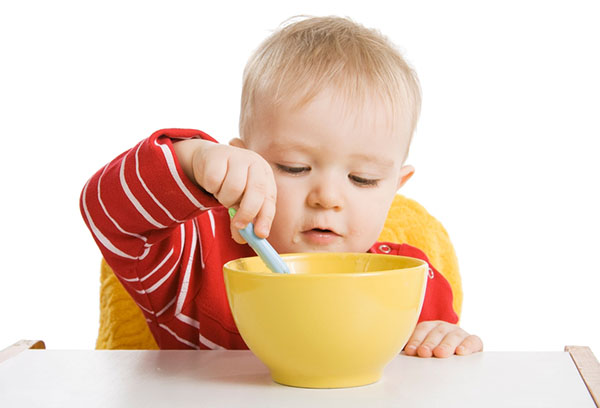Salting of various edible mushrooms in a cold and hot way, storage of salted mushrooms. Salted mushrooms - six recipes for quick salting of mushrooms
In traditional Russian cuisine, mushrooms occupy a special place, since by their nutritional value they can well serve as a worthy alternative to meat, fish or seafood. Mushrooms have excellent taste and unique aroma, and thanks to the high content of vegetable proteins, vitamins and trace elements, they help to make a regular, lean or vegetarian menu more satisfying and varied. In order to have a supply on hand for the whole winter, it is customary to salt, pickle, dry or freeze mushrooms during harvesting.
More than 200 species of edible mushrooms grow on the territory of Russia, of which only 57 are allowed for industrial harvesting and are included in the standards for mushroom production. The full list is given in the sanitary rules of SP 2.3.4.009-93 (current version of 1993), developed by specialists of the Institute of Nutrition of the Russian Academy of Medical Sciences, Moscow State University named after MV Lomonosov and the State Committee for Sanitary and Epidemiological Surveillance of the Russian Federation. By nutritional value, mushrooms are divided into 4 categories:
- 1 - 2 - edible. Normal cooking is enough for them;
- 3 - 4 - mostly conditionally edible. They require preliminary soaking or digestion in several waters to eliminate caustic or bitter substances contained in their fruiting bodies.
Only 3 species fall into the first category: porcini mushroom (Boletus edulis), common saffron mushroom (Lactarius deliciosus), and real breast (Lactarius resimus).

Second group It consists mainly of tubular (or spongy) - butter, boletus, boletus, Polish. Of lamellar mushrooms, it includes champignons (ordinary, field, cultivated), milk mushrooms (yellow, aspen) and white loafs.
Numerous russula, thrush, ranovka, oyster mushrooms, chanterelles, honey agarics, sows, brooms, and other common species are included in categories 3 and 4 as conditionally edible.
With a huge variety of mushrooms, the situation is complicated by the fact that the same species can be called differently depending on the place of growth. For example, valuy (from the russula family) in some regions is called a goby, placoon, ryapka, and in others - a sow, a barn, a kubar, a clerk, etc.
If you are not good at mushrooms, do not take anything that comes to hand in the forest. Edible species are easily confused with inedible or poisonous species that can cause serious poisoning. It is dangerous to eat even edible mushrooms when they are overripe, spoiled or softened.
Experienced mushroom pickers for food and preparations usually take only 5-10 species that are well known to them, using each mushroom for a specific purpose.
Preparing mushrooms for salting
Salting is a universal method of harvesting, suitable for all edible and conditionally edible varieties. At the same time, salting technologies use almost the same, but the preparatory stage has its own nuances: edible mushrooms are salted for the winter without any preliminary treatments (often without adding seasonings), and conditionally edible ones are first soaked or boiled, changing water several times to remove bitterness and pungent taste.

Harvested crops can not be ignored for longer than 3-4 hours. Mushrooms must be used immediately for cooking or processing. First of all, they should be sorted by type and cleaned. Many mushroom pickers recommend limiting themselves to dry cleaning, scraping or cutting off dirt from the legs and removing debris adhering to hats, a soft brush or sponge. This is especially true for varieties intended for drying. With a large amount of sand, the mushrooms have to be soaked briefly in cold water, and then washed and boiled in brine.
For boiling, the brine is prepared at the rate of 1 tbsp. l salt per 1 liter of water. Mushrooms are dipped in boiling water for 10-15 minutes. During cooking, the sand settles to the bottom of the pan, and plant debris (needles, grass, leaves) rises to the surface along with the foam. Therefore, the mushrooms do not mix intensively, but only melt with a spoon, removing the foam. Then they are carefully laid out with a slotted spoon on a colander, in no case falling out of the pan, and washed with running water.
The most popular recipes for pickling mushrooms
Probably, each family has its own traditions of harvesting - "grandmother" secrets, which are inherited by the next generation.

The most common and affordable can be called cold salting methods, which allow to preserve the useful properties of a valuable mushroom product. The technologies are simple, but the cooking process is quite long, based on natural fermentation. Mushrooms are actually cooked in their own juice, gradually salting out and acquiring a spicy sourness, while their flesh remains dense and elastic.
Cold mushrooms can be prepared any mushrooms, but the first thing considered to be the right ones for such salting is mushrooms, mushrooms, trawls, russula, mushrooms. Ready-made pickles turn out to be very tasty, they are served as an independent snack, seasoned with chopped onions and seasoned with vegetable oil, or added to various meat and vegetable dishes.

Servings Per Container: 3 l
Ingredients:
- fresh mushrooms - 5 kg;
- rock salt - 200-250 g.
Technology cooking:
- Mushrooms are cleaned of debris and contaminants, if necessary, they are washed under running water immediately or after a short soaking (no more than 20-30 minutes). Pure mushrooms are sorted by size, large cut into pieces. Some housewives additionally recommend quickly dousing them with boiling water or blanching in boiling salted water (1 tsp. Per 1 l) for 3-5 minutes. Before pickling conditionally edible mushrooms, for example, loafs, russules or thistles, they must be soaked in cold water from 5-6 hours to 2-4 days, changing the water twice a day.
- A handful of salt is poured into the salting container and distributed throughout the bottom. Prepared mushrooms are laid in layers, pouring them evenly with salt. For saffron mushrooms, 40 g of salt is taken per 1 kg, for all others - 50 g.
- If desired, add spices between the layers of mushrooms: pepper (black peas and allspice), bay leaf, dill, chopped onion, garlic cloves, dried cloves, horseradish, cherry or blackcurrant leaves. Spices give different taste shades, so their choice and quantity depend on personal preferences.
- After salting, the container is covered with a wooden circle or a flat plate on which the load is placed. When the mushrooms settle, you can add new ones to them until the container is full.
- A bowl of mushrooms is placed in a cool, dry place, without access to sunlight. After 5-6 days, check the condition of the workpiece. If there is too much brine, it can be cast, refrigerated, and then added back if necessary or used to make sauces. When there is little brine, it is recommended to increase the load or add a small amount of boiled water.
Until fully cooked, the mushrooms ripen in brine for 1-1.5 months.
Many housewives prefer to salt the mushrooms in a hot way. It is also universal, but is better suited for varieties with dense flesh: white, boletus, boletus, and valuy (they are pre-soaked for 2-3 days, regularly changing water). Hot salting is more time-consuming, but it allows you to harvest mushrooms immediately in banks, which are more convenient to store in the refrigerator.

Servings Per Container: 3-4 l
Ingredients:
- fresh mushrooms - 5 kg;
- rock salt - 10 tbsp. l .;
- bay leaf - 5 pcs.;
- dill (fresh or dried) - 25 g;
- black pepper (peas) - 15 pcs.;
- black sweet peas - 10 pcs.;
- dry cloves - 10-15 pcs.;
- blackcurrant leaf - 10 pcs.
Technology cooking:
- The peeled mushrooms are sorted: for large ones, if they are salted with small ones, they separate the legs and cut the caps into several parts, then put everything in a colander and rinse under cold running water.
- Water is poured into an enameled pan and salt is added to it. The brine is prepared at the rate of 0.5 cups of water and 2 tbsp. l salt per 1 kg of mushrooms. The pan is set on fire and brought to a boil. Mushrooms are laid in portions in boiling brine; during cooking, they are gently stirred and the foam is carefully removed with a slotted spoon.
- When the contents boil, pepper, bay leaf and other seasonings are added to the pan. Cooking time for porcini mushrooms, brown boletus and boletus boletus is 20-25 minutes, for boulders - 15-20 minutes, thrush and russules are enough 10-15 minutes. Readiness can be determined by the subsidence of mushrooms at the bottom and the state of the brine, which becomes transparent.
- Cooked mushrooms are placed in a colander or a wide bowl, where they cool faster. Then they are laid out in banks, poured with the resulting brine and closed. Banks are put in a cold place (refrigerator or cellar) and left for 40-45 days until the mushrooms are completely salted.
Those who are fond of forgotten recipes of original Russian cuisine and are ready to make some efforts for their implementation will be interested to get acquainted with one of the methods from Elena Molokhovets, combining the technology of cold and hot salting.

Servings Per Container: 3-4 l
Ingredients:
- fresh mushrooms (boletus) - 5 kg;
- rock salt - 250-300 g.
Technology cooking:
- Put fresh peeled boletus, collected in the fall, into a pot, salt generously and let them stand for a day, often mixing with hands.
- After a day, drain the juice that has separated out into a saucepan, filtering through a sieve or cheesecloth, slightly warm (to a barely warm temperature) and pour mushrooms on it.
- The next day, the juice should be drained again, heated to a warmer state and refilled.
- On the third day, the drained juice must be heated so that it is quite hot, pour mushrooms and leave them for three days.
- After three days of salting, the juice is not drained, but put directly on the fire with mushrooms and brought to a boil.
- When the mushrooms have cooled, they are transferred to a jar, a pot or an oak tub with the hats up, pour in the same brine, and melted (slightly warm) fat on top. The neck of the cans is tied with a bubble (modern housewives may well use plastic caps).
- In winter, before use, salted mushrooms are soaked for several hours in cold water, and then several times they are poured with clean water and heated on a stove until all salt comes out.
If you salt the mushrooms for the winter in this way, then after soaking they turn out very similar to fresh ones and perfectly complement soups, fries and other dishes with their taste and aroma.
Video
We offer you several more salting recipes for certain types of mushrooms: black breasts, valuy and russula
Pickling and salting are different processes. Read about the principles of pickling mushrooms in this article.
For several years she worked as an editor of a television program with leading manufacturers of ornamental plants in Ukraine. In the country, she prefers harvesting of all types of agricultural work, but for this she’s ready to regularly weed, chop, pinch, water, tie, thin out, etc. I am convinced that the most delicious vegetables and fruits are hand-made!
Tomatoes have no natural protection against late blight. If late blight attacks, any tomatoes die (and potatoes too), no matter what is said in the description of varieties ("varieties resistant to late blight" is just a marketing ploy).
Natural toxins are found in many plants; not an exception, and those grown in gardens and vegetable gardens. So, in the bones of apples, apricots, peaches there is hydrocyanic (cyanide-hydrogen) acid, and in the tops and peel of unripened nightshade (potatoes, eggplant, tomatoes) - solanine. But do not be afraid: their number is too small.
“Frost-resistant” varieties of garden strawberries (often simply “strawberries”) also need shelter as ordinary varieties (especially in those regions where there are snowless winters or frosts alternating with thaws). All strawberries have superficial roots. This means that without shelter they freeze. Assurances of sellers that wild strawberries are “frost-resistant”, “winter-hardy”, “tolerates frosts up to −35 ℃”, etc., is a hoax. Gardeners must remember that no one has managed to change the root system of strawberries.
Both humus and compost are rightfully the basis of organic farming. Their presence in the soil significantly increases the yield and improves the taste of vegetables and fruits. They are very similar in properties and appearance, but they should not be confused. Humus - rotted manure or bird droppings. Compost - rotted organic residues of various origins (spoiled food from the kitchen, tops, weeds, thin branches). Humus is considered a better fertilizer, compost is more affordable.
Compost - rotted organic residues of various origins. How to make? Everything is stacked in a pile, pit or large box: kitchen residues, tops of garden crops, weeds cut to flowering, thin branches. All this is interbedded with phosphate rock, sometimes straw, earth or peat. (Some summer residents add special composting accelerators.) Cover with a film. In the process of overheating, a bunch is periodically ted up or pierced for fresh air to flow. Usually compost "ripens" 2 years, but with modern additives it can be ready in one summer season.
Humus - rotted manure or bird droppings. They prepare it this way: manure is piled up in a pile or pile, interbedded with sawdust, peat and garden soil. Burt is covered with a film to stabilize temperature and humidity (this is necessary to increase the activity of microorganisms). Fertilizer "ripens" within 2-5 years - depending on the external conditions and the composition of the feedstock. The output is a loose homogeneous mass with a pleasant smell of fresh earth.
New to US developers is the Tertill robot, which weeds weeds in the garden. The device was invented under the guidance of John Downes (creator of the robot vacuum cleaner) and works autonomously in all weather conditions, moving on uneven surfaces on wheels. At the same time, he cuts all plants below 3 cm with a built-in trimmer.
The homeland of pepper is America, but the main breeding work for the cultivation of sweet varieties was carried out, in particular, by Ferenc Horvath (Hungary) in the 1920s. XX century in Europe, mainly in the Balkans. Pepper came to Russia from Bulgaria, therefore it got its usual name - “Bulgarian”.
Mushroom picking takes place in the summer and fall season. Previously, wooden barrels were used for salting and the method of cold salting was used, as the most unpretentious.
Cold salt is practiced at home and is now practiced, though in a smaller container and then laid out in jars for storing mushrooms such as russula, milk mushrooms, thistles, mushrooms, mushrooms, and other pigs.
Preparatory stage
The whole technological process of preparation consists of certain stages. Let's consider them in more detail:
- Go through the collected "forest gifts." Remove rotten and soft parts, twigs, and other unsuitable parts for food.
- Soaking occurs in a cold liquid for several days. Moreover, it is necessary to regularly replace the water. For forest fruits with a bitter aftertaste, salted and acidified liquids are used. Add citric acid and 2 tsp at the tip of the knife. rock salt per 1 liter of water. Depending on the type of mushroom, bitter and valuy are soaked for 4 days, breasts and podstrudy - 3 days, traps and whites - 2. With a soft structure, the mushrooms are not soaked. Rinse them easily in several waters.
- In addition to soaking, it is allowed to use the blanching process. This method similarly allows you to get rid of the characteristic bitterness. To do this, add 1 tsp to 1 liter of filtered liquid. rock salt, bring to a boil. It is important that the crystals are completely dissolved. In boiling water, mushrooms are aged depending on the type: thrush, whitewash - 40-60 minutes, chanterelles, valui, load, bitter - 20 minutes, mushrooms - 6 minutes.
After the initial processing of “gifts”, you need to learn how to properly salt different types of mushrooms for the winter, let's see how.
Salted saffron milk cap
Want to keep all the nutrients and vitamins in the product? Then you will like this recipe for pickling mushrooms for the winter in jars. The advantages of the method are that you do not need to boil or boil anything. And the “forest gifts" themselves are fragrant and very tasty. Moreover, saffron mushrooms, unlike many other mushrooms, do not need to be soaked.
Products:
- sweet peas - 40 pcs.;
- garlic - 4 cloves;
- non-iodized salt - 100 g;
- lavrushka - 20 sheets;
- mushrooms - 2 kg;
- currant leaves - 20 g.

- Mushrooms must be used only fresh, young. Pre-prepare by rinsing thoroughly. Put on a clean, dry waffle towel, dry.
- Wash the container for salting. At the bottom, pour out non-iodized salt, mushrooms and spices, with the first layer, after again salt. Slices of garlic can be cut. In the same way, fill the container to the top. The final layer must be a preservative - salt.
- Next, lay a clean gauze, set the plate according to the size of the container and put a heavy load. After some time, the mushrooms will pickle. It should cover the entire volume of mushrooms. After 15-20 days, saffron mushrooms will be fully prepared. For storage, you need to put in banks and put them in the refrigerator.
Salting Bitter
This option of the recipe will appeal to even inexperienced housewives. Bitters are a universal type of mushroom; they can be salted and pickled. Consider the salting of forest fruits by the cold method.
Products:
- bitters - 2 kg;
- rock salt - 100 g;
- cloves of garlic - 10-15 pcs.;
- cumin to taste;
- currant leaves - 10 pcs.;
- horseradish leaves - 10 pcs.;
- black peas - 15 pcs.

- Rinse cans, dry in the oven. To sort, wash and soak the mushrooms, as described above.
- Peel the garlic, cut into slices. Rinse fragrant leaves, pour over boiling water. Put some spices on the bottom of the containers, sprinkling with coarse salt. Then spread a layer of mushrooms, then salt and spices. We fill the container in the same way until the products and spices are finished.
- Lay a gauze napkin on top, and a heavy load on it. Put the building in the refrigerator for 2-3 days. For this time, the mushrooms should combine with the salt and let the juice flow. If the brine is not enough, then it needs to be additionally prepared. Dissolve 20 grams of non-iodized salt in 1 liter of filtered water. Fill containers with mushrooms and spices. According to this recipe, cooking salted mushrooms lasts 35-45 days.
Salting of whites
Let me remind you that whites are a field thrush.
Products:
- mushrooms - 5 kg;
- rock salt - 200 g;
- garlic - 1.5 heads;
- fresh dill - 100 g;
- lavrushka - 4 leaves;
- black peas - 20 pcs.

- Prepare mushrooms: sort, rinse and soak for several days. It is important to remember that it is necessary to replace the fluid so that the ingredient is not soured.
- Divide the garlic into slices. Release each clove from the husk, cut into several parts. Rinse the greens, shake and chop finely. Crush black peas with a wooden mortar to reveal a more saturated aroma and taste. Combine the prepared components in a separate container by pouring a tablespoon of table salt. To stir thoroughly.
- Wash jars with soap and dry in the oven. At the bottom of the containers, spread a small amount of spices, then the prepared mushrooms, with their heads down. Put spices and forest fruits in the same way until the place in the jars and ingredients runs out.
- The last layer must be covered with gauze, folded in several layers. Place a heavy load and store in a cold place for 30 days. After the specified time, the mushrooms can be served to the table.
Cold salting of mushrooms is not difficult, but the result is a fragrant snack. This method allows for a short time period to make a delicious workpiece. The most time-consuming process is the initial preparation of forest mushrooms.
Salted mushrooms are a delicious and versatile product. They act as a full-fledged independent dish, and as an ingredient in salads / savory pastries, and also combine perfectly with meat and vegetables. Many housewives may have a logical question: how to salt the mushrooms so that their taste does not deteriorate, and the billets are stored for a long time? We will analyze all the subtleties of this process in our article.
What mushrooms are more suitable for salting
All edible mushrooms can be salted. Processing methods may vary only slightly, depending on the particular type of product.
It is important to remember that you need to pay attention not only to the type of raw material, but also to the places of its collection, since the mushroom, like a sponge, instantly absorbs pollution and poisons from the air.
With cultivated varieties such as oyster mushroom and champignon, the danger is minimized, then with the rest of the mushrooms it is important to adhere to some rules:
- It is necessary to collect raw materials for salting in the forests, as far as possible from the places of settlement of people, industrial enterprises and highways. Such a product will contain a maximum of nutrients and vitamins, and will not cause poisoning.
- If the appearance of the fungus is in doubt, do not cut it and use it for food.
- It is extremely important to know well what edible mushrooms look like in order not to accidentally confuse them with poisonous ones. If there is not much knowledge on this topic, you should ask for help from experienced mushroom pickers.
- The best time for a “quiet hunt” is in the early morning, when the mushrooms are better seen.
- Only strong, whole specimens are taken for food.
Properly selected raw materials are the basis of delicious and safe pickles.
Preparing for salting
Before proceeding directly to salting, some preparatory work should be done:
- It is important to remember that freshly harvested raw materials must be processed within the next couple of hours, as forest mushrooms are prone to rapid spoilage.
- The resulting crop must be carefully sorted, removing spoiled, cracked specimens, so that the pickles are better stored.
- After this, the mushrooms are thoroughly washed with running water, cleaning from pieces of earth, foliage, sand and other debris.
- Then large specimens are cut into several parts, while the smaller ones separate the leg from the cap. Some mushrooms begin to quickly darken, so the already chopped raw materials are put in any container filled with water. Some salt is also added there.
An important addition: exclusively mushroom caps should be salted hot.
To prepare such a mushroom snack per kilo of any mushrooms, you will need such components:
- a spoonful of salt;
- peppercorns;
- half a glass of filtered water;
- lavrushka.
To the above ingredients, optionally, you can add leaves of cherry, currant, clove flowers, dill. Mushroom caps must first be separated from the legs.
Salting of mushrooms is carried out as follows:
- In the pan, you need to boil the required amount of water, add salt and add the remaining spices.
- Then the mushrooms are laid. After boiling again, the fire decreases. It is important to remove foam from the brine surface.
- Cooking time is no more than half an hour, all this time the mushrooms must be stirred to avoid burning. Finished raw materials will begin to sink to the bottom, but the brine should remain transparent.
- Now boiled mushrooms are laid out in previously processed containers, poured with brine and corked.
The blanks are allowed to cool, after which they are transferred to storage somewhere where it is cool and dry.
The method is convenient for its simplicity and speed: you only need to boil a pickle for mushrooms and boil them in it. But cold and dry methods are much more time-consuming.
With garlic for the winter
One way to hot pickle mushrooms is to cook them using garlic. This vegetable will add a savory flavor and mouth-watering aroma to the pickle.
To prepare a tasty snack, you will need the following components:
- 1 kg of any mushrooms;
- half a glass of water;
- 3 tablespoons of coarse salt;
- 4 cloves of garlic;
- 8 leaves of currant;
- 10 peas of black pepper;
- 2 large umbrellas overripe dill.
Prepare the pickle as follows:
- Mushrooms are pre-cleaned, washed, cleaned legs and especially large hats are divided into several parts.
- Raw materials are poured with water, salted and boiled over medium heat for no more than 20 minutes, constantly removing foam.
- In a prepared jar, you need to lay mushrooms and spices in layers. When the container is full, it is filled with a cooled brine and corked.
Its main difference from all the others is that the mushrooms are soaked in water for a couple of days, during which they regularly change the liquid.
After this, the prepared raw materials are laid out in a barrel in layers, alternating with spices and salt. Then the container is covered with a clean cloth, and the load is placed on top.
As the mushrooms settle, the tank is filled to the top with fresh raw materials with spices and salt. Do this until the bowl is completely filled with rammed mushrooms.
Such barrels are stored only in the cold, best of all - in the basement.
Salted champignons for the winter
By the above principle, champignons can be easily prepared.
This is done as follows:
- To begin with, mushrooms are cleaned, washed, legs removed. After this, the raw materials are poured with clean water for a couple of days. The fluid must be changed twice daily.
- Spices, finely crushed garlic, salt are spread in a prepared container. A layer of champignons is laid on top, which should not be thicker than 6 cm. It is important to observe the proportion - 2 tablespoons of salt are taken per 1 kg of raw material. Spices are added to taste.
- After that, the container is covered with a clean cloth, the load is placed on top, and the entire "structure" is sent to a dark place for salting.
- If you plan to harvest a large number of mushrooms, then as the workpiece settles in a barrel, fresh mushrooms, salt and spices are added to it.
Completely mushrooms salted in this way will be ready in a month and a half.
Dry cooking
This method is the fastest - you can enjoy mushrooms in 2 weeks.
When salting, no liquid is used - only the mushrooms themselves and salt.
It’s very easy to make pickles:
- First, the mushrooms are cleaned of dirt with a soft cloth or brush, after which they are wiped and put into a pre-disinfected container.
- Spread the raw materials in layers, each of which is salted.
- When all the ingredients are laid out, pure matter is placed on top, and a heavy load is placed on top of it. The workpiece is sent to the cold.
For 1 kg of raw materials, 4 tablespoons of salt will be needed. No spices are used for salting, as this method is designed to reveal the natural taste and aroma of mushrooms.
It is best to use a glass or wooden container. Metal or clay can degrade the taste of the finished product.
- Pure breasts are laid out in layers, sprinkling with salt, after which a thick cotton towel and a heavy load are placed on top. It is best to use stone.
- The billet is sent to the cold, and in a couple of weeks it will be possible to put crispy and fragrant breasts on the table.
There is nothing complicated in cooking salted mushrooms. The main thing is to choose a quality product, then carefully prepare it for salting and strictly adhere to the technology. This is the only way to get a really tasty snack. Give it a try!
Dear readers, in the season of collecting the gifts of the forest I decided to once again return to the mushrooms. Recently, I shared recipes and told how to pickle mushrooms for the winter. See these recipes on the website. Today we’ll talk about another storage method - pickling mushrooms for the winter.
Salting of fungi can be varied. And to participate in the process of preparing forest delicacies for storage can not only salt and soda, but also various spices, herbs, sugar, onions and other ingredients. They will certainly bring their taste notes and give the dish a special zest.
How to sterilize cans for salting and storage

How to properly sterilize cans for seals for the winter, I told you here, in this case, any of the described methods is suitable: under steam, in the oven, in the microwave. It is possible to salt the mushrooms in an ordinary pan or in a barrel, washing them thoroughly. The main difference between the banks and the pan (barrel) will only be that in the latter case, mushrooms will have to be eaten for one or a half months, depending on the recipe. You can store the product in sealed banks until the new harvest season, that is, a whole year.
Cold pickling of mushrooms - oily
I note that this method of pickling mushrooms is suitable for people who own a cold cellar or basement. You can make products in the refrigerator, but for this you need to free up some space in advance for banks. The cold salting method involves preparing mushrooms at a temperature of no higher than +16 degrees.

Ingredients:
- 5 kg beautiful (pick up a small size with flat hats) oily.
- 10 leaves of currant bush.
- 10 grape leaves.
- A glass of salt (we take a large salting).
- Dill inflorescences (umbrellas) - 10 pieces.
If the mushrooms are of different sizes, distribute them into groups: large, small and medium. Firstly. First to the bottom, stack the largest, then medium and small. Spread the oil with the hats down.
Algorithm of actions:
Pour a spoonful of salt on the bottom of the container without a slide, lay the first layer of mushrooms, the second and third.
After the third layer, salt again. We spread four leaves of each plant and four dill umbrellas.
We apply greens with oils, now we make two layers and again greens and salt.
We complete the calculation process and cover all this beauty from above with the remaining salt, leaves of grapes and currants, dill.
Cover the container with gauze or any clean natural cloth.
We put a press on the fabric, send it in the cold for 25-30 days. If the butter is salty for your taste, soak a little (about an hour) in cold water before consumption. Such mushrooms should be stored in the cold for no more than two months, and remember, the longer they are stored, the more saline they become.
Salt the oil in a cold way in a wooden tub, glass or enamel bowl. In other words, in one that is not susceptible to oxidation.
You can salt the mushrooms in this way immediately in jars, or first in a barrel or pan, then transfer to jars for convenient storage. I recommend salting saffron mushrooms, spreading them with their hats up, sprinkling salt on each layer.

Will need to prepare:
- A kilogram of saffron milk mushrooms.
- 50 grams of salt (approximately 2 tablespoons).
- 15 peas of black allspice.
- Horseradish leaf.
- 4 buds of cloves.
- Optionally, a bunch of fresh dill and a few (three to four) cloves of garlic.
The cooking process in steps:
1. Go through the forest gifts (remove adhering leaves and needles, scrape off the dirt from the legs). Now you don’t need to wash the gifts of the forest, this method differs from others in that it is dry and in this case it should not be wetted.
2. At the bottom of the prepared containers, lay 1⁄2 part of the horseradish leaf, torn to pieces, but not very finely, this product will not allow mold to appear during the salting process.
3. Dill and peeled garlic, detail, you need to crush very finely, preferably larger. Mix these ingredients and divide into three parts. Put the first part on a horseradish sheet at the bottom of the can, the second you will use in the middle and the third sprinkle the top of the ingredients.
Instead of dill, it is possible to use leaves of currant or oak, this is if you salt in jars, if you use a wooden tub for salting, then it itself will give the product a pleasant woody aroma.
4. Put the first layer of mushrooms with the hats up, salt out, lay the second and third layer, again sprinkle with salt, etc. until the tank is full. Salt should be used every two layers of fungi. Do not forget to use the prepared dill-garlic mixture approximately in the middle of the salting. Together with it, put in the jars cloves and peas of pepper (the last products can be laid all at once, or distributed in parts bottom-mid-top).
Do not worry that one of the layers is poorly salted, in the process of harvesting the mushrooms will give juice and it will soak all the products evenly.
If there are a lot of mushrooms, then calculate the amount of salt as follows. Take 1.5 cups of coarse salt on each bucket of saffron mushrooms.
5. Top the saffron mushrooms with the remaining horseradish and spices.
6. Cut a piece of gauze so that it is enough to close the container. Put oppression on top of it, for example, a stone or a jar of water, if you salt the mushrooms in a saucepan, leave the mushrooms in this form for 14 days in a cool place. Change cheesecloth every three days.

7. After 14-18 days mushrooms are ready. You can already serve them on the table with pleasure, with a pleasant feeling that you did it yourself to eat and treat your friends. Or cover with tight lids and put in storage in the refrigerator / cellar, until the opportunity.
On a note! Salted mushrooms should be stored together with brine without draining it. If during salting (during the first 7 days) a place in the container begins to appear (mushrooms secrete juice and settle), feel free to report a new portion there.
Be careful! In the process of cooking, the mushrooms will change their color and become darker, brown-green, do not worry, this is a common occurrence, this does not mean at all that you used a bad product.

- Boletus (in quantity per prepared liter container, the jar should be filled at the very neck);
- A liter of pure water.
- Strength of the cook - 50 gr.
- Peas - 5 pcs.
- A slice or two of garlic to your taste.
- Bay leaf - 3 pcs.
- Fresh dill - 4 branches.
Hot cooking method:
Sort, wash very thoroughly (it is worth washing until the water is completely clean). Dry the selected boletus mushrooms a little.
On a note! Salted birch mushrooms turn out to be the most delicious if you use only hats in the cooking process, but look here yourself, if there are few products, cut the legs.
Transfer the prepared boletus to the pan.
Prepare a brine from the ingredients indicated in the recipe. To do this, simply dissolve the salt in hot water, add laurel, dill, pepper, garlic, boil for 2 minutes and pour mushrooms with all this.
Together with the brine, put the mushrooms on the stove, bring to a boil, boil for 20-25 minutes on low heat. At this point, do not forget to remove the resulting foam.
Arrange your favorite spices in ready-made sterilized jars (take whatever you like, dry herbs, fresh dill umbrellas, horseradish, parsley, garlic, mustard seeds, etc.). You can not use spices, but use those from which the brine was cooked.
Distribute the mushrooms in the containers along with the brine, tightly clog or roll up the products, let them cool. Be sure to clean it in a refrigerator or in any cool place.

Should be prepared for cooking:
- According to a kilogram of boletus, boletus and boletus.
- Incomplete about a third from the top a glass of large salt.
- A bunch of dill and parsley.
- A large head of garlic.
Step by Step Actions:
Sort all gifts of the forest, rinse, put on paper towels, let dry.
Wash and dry the prepared greens, chop not very finely with a knife.
Peel the garlic cloves, cut each into circles.
In a carefully washed pan, add a little salt, then a layer of mushrooms (spread with hats up), herbs, garlic, mushrooms again, a few pinches of salt (distribute evenly), repeat the layers in this order until it is all over.
Cover food with a cloth, lay a bowl with a heavy load on it. Clean for 15-17 days in a refrigerator or cellar.
After two weeks or more, take out allsorts and eat or lay it out in jars. Cork and can be stored in the cold. Shelf life at temperatures from +5 to +8 degrees is up to 5 months. If the storage temperature is higher, the shelf life is reduced.
Quick and easy cold pickling of mushrooms (mushrooms)
Why quickly, but because it is not necessary to cook mushrooms, not what heat treatment. But the truth here will have to clean the "forest brothers" well and rinse thoroughly.
Here you can save a little time on preprocessing. But, as you know, the hot method of salting mushrooms involves heat treatment. But easier, boil in boiling water.

It will be required for pickling to take:
- Two kilograms of boletus.
- Four tablespoons of salt (use crayon, but not iodized).
- 2-3 bay leaves.
- Eight peas of black pepper.
- 6-7 dry clove buds.
- Two dill umbrellas.
- A bunch of fresh green dill.
- Six leaves of currant.
How to grease boletus for the winter hot way
Prepare the boletus (wash, clean, cut), if they are large, then cut, leave small ones whole or just separate the hats from the legs.

Pour 2 liters of water into the saucepan, no more, it is better to take a little less, boil, add mushrooms to boiling water, reduce heat, cook for thirty minutes, removing the foam that appears each time.
When the foam has ceased to form, pour all the seasonings according to the recipe, except for greens, you need to add it 10 minutes before the end of cooking.
When the boletus settles to the bottom, and the brine becomes transparent, it will mean that everything is ready.
Now it remains to pour the products into sterile jars and roll up. Pour the boletus with the brine so that the liquid is about 2 cm on top of the mushrooms.
Mushroom pickling is finished! Allow the sunsets to cool completely, while wrapping the boletus is not necessary. Then clean in a cold place and store all winter. Eat boletus cooked in this way is possible after 1-1.5 months. The shelf life of rolled up cans is up to 5 months.
Good luck and all the best!
Traditionally, September is the month of “hunting” for our mushroom pickers. The businesslike and very satisfied “hunters” carry from the forest full bastholes and buckets of strong boletuses or moss-flies, elegant boletus and boletus, white and black mushrooms, waves, chanterelles, butterflies and honey agarics. And this year, mushrooms are still marvelously large and fruitful: sometimes you can’t reach the forest, but already full baskets ...
But the season of “silent hunting” is not so long, and freshly cut mushrooms are practically not stored, therefore, immediately after returning from the forest, summer residents are taken for processing the crop. If you scored full baskets, it will take a lot of time to clean up ... enough to figure out how to bring them to the winter tables.
And there are many ways: mushrooms can be frozen and pickled. Today we will discuss cooking salted mushrooms. It turns out that there are many ways to prepare for the winter this delicious and healthy, beloved snack among the people, which more than once will help the hostesses both in fasting and on holiday.
What mushrooms are suitable for salting
Here nature helped us: practically all types of mushrooms that we bring from the forest are subject to salting. You can salt:- white mushrooms;
- birch trees;
- boletus;
- moss mushrooms (variegated, red and green, Polish mushrooms);
- oily;
- gruzdy (they are white gruzdy, raw and legal);
- black breasts (chernushki);
- yellow breasts (yellow waves, scratching);
- preloads (dry, black, white and blackening);
- saffron mushrooms;
- whites;
- chanterelles;
- russula (green, golden, green-red, blue-yellow, olive, swamp, Turkish);
- value;
- undergrowths (they are also earrings, earworms, plantains);
- smoothies;
- champignons;
- honey mushrooms.

Salted mushrooms
Best for salting tubular mushrooms are considered. The most delicious salted mushrooms are recognized as milkmen. Tubular mushrooms in pickling are unusually tasty, but exclusively young and strong are used for pickling, otherwise the hat will become flabby and tasteless during the cooking process, and the specific crunch will be completely lost.
The most pleasant stages in the harvesting of mushrooms for the winter are a campaign for them in the forest, putting mushrooms in jars (or barrels), and a sample of the finished product.

And the most tedious, time-consuming and lengthy process, as always, is the preparatory stage, which includes sorting, cleaning and soaking.
Sorting
Mushrooms are always recommended. sort by type. Why? The time required for salting is different for different types of mushrooms. And although many recipes of our grandmothers suggest a “joint salting” (this is how the most delicious salted mushrooms are obtained), nevertheless, each species needs to be processed in different ways (their soaking and cooking time is not the same). But after preliminary preparation, you can put the mushrooms in one container for pickling, if you think so.Cleaning
All mushrooms are cleaned of dirt, remove damage and washed well with cold water. Particularly thoroughly wash the middle recesses of the caps. In leaf mushrooms, the legs are separated from the hats. It is convenient to clean the dirt between the lamellae of the inside with a not very hard toothbrush. The russula and oil remove the skin from the caps.
If you plan to cut large mushrooms, this can be done already during cleaning, then it will be more convenient and easier to work.
Soaking
Soak those mushrooms that contain milky juice (milky). The time required for the procedure completely depends on the degree of its causticity (bitterness). As a rule, adhere to such terms:- mushrooms and Russula - it is considered possible not to soak;
- white breasts - up to 1 day. Some mushroom pickers do not soak small white breasts;
- waves - up to 1-1.5 days;
- black breasts, whites, valuys, undergrowths, smoothies, violinists - from 2 to 3-5 days.
The water in which the mushrooms are soaked must be changed 2, or even 3 times a day. Some mushroom pickers generally change it every 4-5 hours.

So that the mushrooms do not begin to sour, salt is added to the water for soaking (iodized salt is not recommended) at the rate of 10 g per 1 liter of water and citric acid at the rate of 2 g per liter of water. The addition of salt and acid does not eliminate the change of solution at least 2 times a day!
How to salt mushrooms
When, finally, the cleaning and pre-treatment are finished, you can breathe a sigh of relief: the rest of the salting process is easy, fast and even creatively exciting.
Salty mushrooms for the winter
Mushrooms in three ways: dry, cold and hot.
Dry salting
The dry method is the most convenient and least time consuming. Unfortunately, this way you can only salt saffron milk cap and russula. There are mentions on the Internet that blackberries, smoothies and undergrowth are suitable for dry salting, but since both of them have a rather caustic milky juice, we would not recommend using them for salting without preliminary soaking.But saffron mushrooms - mushrooms of the first category, they are tasty even raw, without any processing. Therefore, they are excellent for dry salting. And russula (except for burning), also will not bring harm without additional processing. 
Why is the method called dry? It differs from the “wet” cold only in that the mushrooms are not soaked before salting and do not even wash, but simply cleaned of adhering garbage with a soft cloth (as far as salting was encountered in life - most often mushrooms and russettes are washed and then dried )
Tip from mushroom pickers: in russulas, be sure to peel off the hats - it gives bitterness.
Salting process
In a prepared container (an enameled pan, bucket or tank, a wooden barrel, and so on) lay the mushrooms in layers with the caps down, pouring each row of coarse salt (at the rate of 40 g of salt per kg of mushrooms). Cover the top row with a clean cloth, put a flat wooden circle, an enamelled lid or other similar object on top, and press down with bend.The crack can be pure stone (most often it is granite), which has been in boiling water for disinfection, which is wrapped with gauze. At home, glass jars or plastic water bottles often become oppression. Limestone and metal oppression are unacceptable.

After 3-4 days, the mushrooms will settle, give juice, it will be possible to report new ones. And you can transfer it to the prepared cans and send it to the refrigerator or cellar for storage. Mushrooms will be ready for use 7-10 days after the last bookmark.
If the preparation goes in urban conditions and there is no place in the refrigerator for storing mushrooms, you can transfer them to the prepared steamed cans, pour fresh brine and sterilize: 0.5 l cans - 30 minutes, and liter - 40 minutes.
Cold salting
Cold salting is a way of salting mushrooms without their thermal treatment. They clean and wash the mushrooms, soak the milkers (according to the recommendations about which we spoke a little higher), then go directly to the salting process.
At the bottom of the prepared container, lay (to taste and by choice) bay leaf, allspice peas, dill, garlic, horseradish roots and leaves, cloves, caraway seeds, twigs and blackcurrant leaves, cherry and oak leaves, and so on. It is not recommended to lay too many spices so as not to interrupt the aroma and taste of the mushrooms themselves. Many housewives do not put any aromatic additives, Considering this to be completely superfluous, especially in relation to mushrooms, saffron milk mushrooms and valuev. So, as always, the choice is yours.
Putting mushrooms on hats in rows, they are sprinkled with coarse salt (at the rate of 40-50 g of salt for each kg of mushrooms). After all the mushrooms are laid out, on top you need to put a clean cloth (not synthetics!), Cover with a circle and press down with oppression.
If salting is done in 3-liter cans, a bottle of water or 2-3 plastic bags (for reliability, nested in each other), inside which is water) can become oppression.
Mushrooms under oppression secrete juice and settle every 2-3 days. Then you can report a new batch from above - and so on, until the mushrooms stop settling, and the entire tank is full.

Tip from mushroom pickers: If the juice is not secreted in sufficient quantities (so that the mushrooms are covered with it), the weight of the yoke must be increased. If after this juice is not enough, you should add brine (based on 20 g of salt per 1 liter of water).
When the container is full, or you find the amount of salted mushrooms sufficient, cover the container on top and transfer to a cold place (cellar, basement).
Cold salted mushrooms will be ready for use:
- mushrooms - after 10-12 days;
- white breasts and thistles - after 1.5 months;
- value - after 2 months.

There is another way to cold pickle mushrooms:
With this method, mushrooms are stacked in spices and herbs in rows, which are again spiced every 5-8 cm and sprinkled with coarse salt. When all the mushrooms are stacked, cold boiled water is poured into the tank, a circle is placed on top and oppression is put (so that the mushrooms are under the brine).
After sedimentation of the mushrooms, as in the previous method, you can add new portions. The filled container is closed and transferred to a cold place.
Gruzdi in Altai
- mushrooms - 10 kg;
- salt - 400 g;
- dill - 35 g;
- grated horseradish - 18 g;
- garlic - 40 g;
- allspice - 40 pcs;
- bay leaf - 10 pcs.
- Mushrooms are cleaned, washed, soaked for 2-3 days.
- Shifted with spices, stored in brine under pressure.
- Mushrooms are ready to serve on the table in 30-40 days.
... and the result of salting.
Hot salting
This method is good for tubular mushrooms, and for lamellar. All preliminary preparation for salting is carried out as standard: mushrooms are cleaned, washed; at lamellar legs must be cut, too large hats - cut. Tubular ones do not need preliminary soaking, but the lactic ones are soaked before hot salting.
After preliminary preparation, the mushrooms are boiled, this determined the name of the method.
Mushrooms are placed in boiled salted water (50 g per 1 liter of water) and boiled, counting the time from the moment of boiling already with mushrooms:
- porcini mushrooms, boletus and boletus, mushrooms, butterflies - 10-15 minutes;
- russula and travushki - 10-15 minutes;
- breasts and podgruzki - 7-10 minutes;
- champignons - 10-15 minutes;
- honey agarics - 25-30 minutes;
- value - 30-35 minutes;
- chanterelles - 15-20 minutes;
- saffron milk - 2-3 times poured with boiling water.

Some boil mushrooms in boiling water for 10-20 minutes instead of boiling, changing it 3-4 times after cooling, others always 40-45 minutes. boil - for fidelity. The readiness of mushrooms can be determined by external signs: when they settled to the bottom, and the decoction looked transparent. Properly cooked mushrooms remain strong and resilient.

Boiled mushrooms are taken out, wait when they have cooled, and put into the selected container, sprinkled with salt (at the rate of 2-3% of the total mass of mushrooms) and add spices and spices of your choice. Pour the brine in which they cooked, put dill umbrellas and garlic on top. It is also recommended to pour vegetable oil on top with a layer of 1 cm.
Such mushrooms are stored in a cold ventilated room at a temperature from 0 to +3 ... + 4ºС. They will be ready in a month, although many begin to use them earlier.
In the next video - salting nigella hot way.
Mushroom rescue
Only suitable for porcini mushrooms, boletus and boletus, oaks, mushrooms, butter and honey mushrooms.To prepare, you will need:
- mushrooms - 1 kg;
- salt - 45-60 g;
- water - 200 ml.
- Peeled and washed mushrooms for 8-10 minutes. dip in boiling salted water.
- Then drain the water, put the mushrooms in sterilized jars, pour boiled vegetable oil, tie the neck with paper.
- Store in the refrigerator.

It is always of interest how experienced mushroom pickers of the older generation make preparations (once they have reached their advanced years, consuming fresh and canned mushrooms every year, then they are doing everything right))
Therefore, the following video is of undoubted interest - this is salting mushrooms according to the recipe of Grandma Petrovna))
Storage of salted mushrooms
Salted mushrooms are usually stored at a temperature from 0 to +3 ... + 4ºС. Try not to allow them to freeze (this happens when storing blanks on the balcony of a city apartment) - if this happens, the mushrooms will irrevocably lose their taste and begin to crumble. But a temperature increase, even a slight one, is also undesirable: if the storehouse is above +5 ... + 6 ° C, the mushrooms can become acidic and moldy.
Store salted mushrooms correctly
Care must be taken to ensure that pickle always covered mushrooms; if it evaporates, immediately add boiled water.
If on top mold appeared - you need to replace the fabric with another one (if you want to leave the old one, it is not enough to rinse, but you need to wash and boil), thoroughly rinse the circle and oppression and rinse it 2-3 times with boiling water. So that the mushrooms do not mold, you can pour sunflower oil into the brine (before this you need to boil it): it will create additional protection against the penetration of air and microbes.
In the mistress's notebook
- best in salting show themselves milkers - mushrooms, trawls, mushrooms, russula and chanterelles;
- if you are planning to salt tubular mushrooms, choose only young and strong. For older, the hat will become soft and tasteless, and the crunch characteristic of salted mushrooms will be completely absent;
- to easy peel off the hats at butter, they can be 3 minutes. blanch in a hydrochloric acid solution (per 1 liter of water, 20 g of salt and 2 g of citric acid) and immediately cool;
- the roots and leaves of horseradish will not only give the mushrooms a spicy sharpness, but also protect them from souring;
- the green sprigs of black currant a pleasant aroma will come to salted mushrooms, and oak and cherry leaves - strength and appetizing crunch;
- saffron milk mushrooms, white breasts and whites without any spices and herbs, so as not to drown out your own piquant resinous aroma;
- after soaking mushrooms will weigh more, because they will pick up moisture, this must be taken into account when calculating the salt tab;

- not allowed pickle mushrooms in galvanized tin dishes and in clay pots. The most correct option is a tub or a barrel of deciduous trees (not aspen!), Or ate; in the conditions of the city - glass jars and enameled containers;
- sometimes difficult to determine weight of oppression for large containers. For example: on a 50-liter barrel filled with mushrooms, the weight of oppression should be 8-10 kg;
- before use, salted mushrooms are desirable rinse or soak in cold water, they need to be fried only after soaking;
- water in which porcini mushrooms were cooked, boletus and boletus, can be boiled (about half), bottled (can be sterilized!) and stored in a cold place. And in winter to use for making sauces and soups.

Salted mushrooms are rightfully considered one of the best delicacies of our cuisine. We examined only the basic, basic moments of salting, but what your mushrooms will be on the table - more or less salty, spicy or not, crunchy or not - it depends on you.
